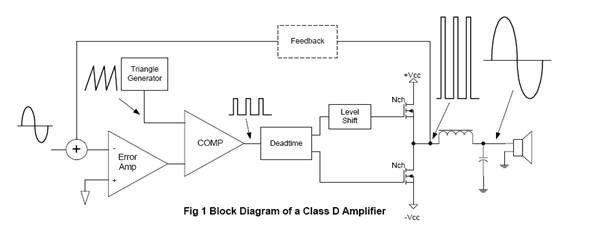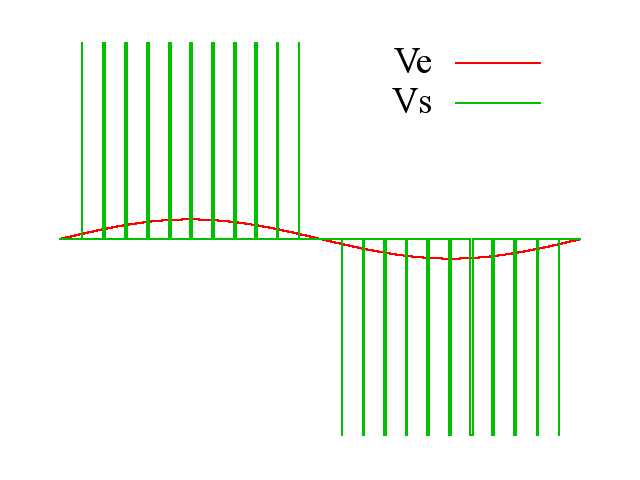How clase D amplifier works there with the PWM?
Despite the term amplifier, it's generally applied to components created to reproduce signals with a bandwidth much smaller than the switching frequency. These amplifiers use a PWM (pulse width modulation).
The input signal is transformed to a sequence of pulses whose average value is directly proportional to the amplitude of the signal. The frequency pulse is normally ten or more times higher frequency in the input signal. The final output dial is composed of a string of pulses whose width is an image of the amplitude of the frequency signal that has been amplified, and therefore, these amplifiers are also known as PWM amplifiers. The output has more of the amplified signal, unwanted spectral components (as is the case of pulse frequency and its harmonics) to be removed by a lowpass filter. The filter is usually built with theoretical lossless components like inductors and capacitors to keep the performance.

A PWM amplifier operates with a similarly system of a switched source, except that a PWM amplifier is currently supplying a voltage signal that has a variable audio support relatively fixed, while a source feeds a switched voltage fixed with a variable load. A class D amplifier should not be confused with an amplifier that uses a switched source. Thus, it can use any type of food but the amplifier itself uses the switching of output components for successful amplification.
